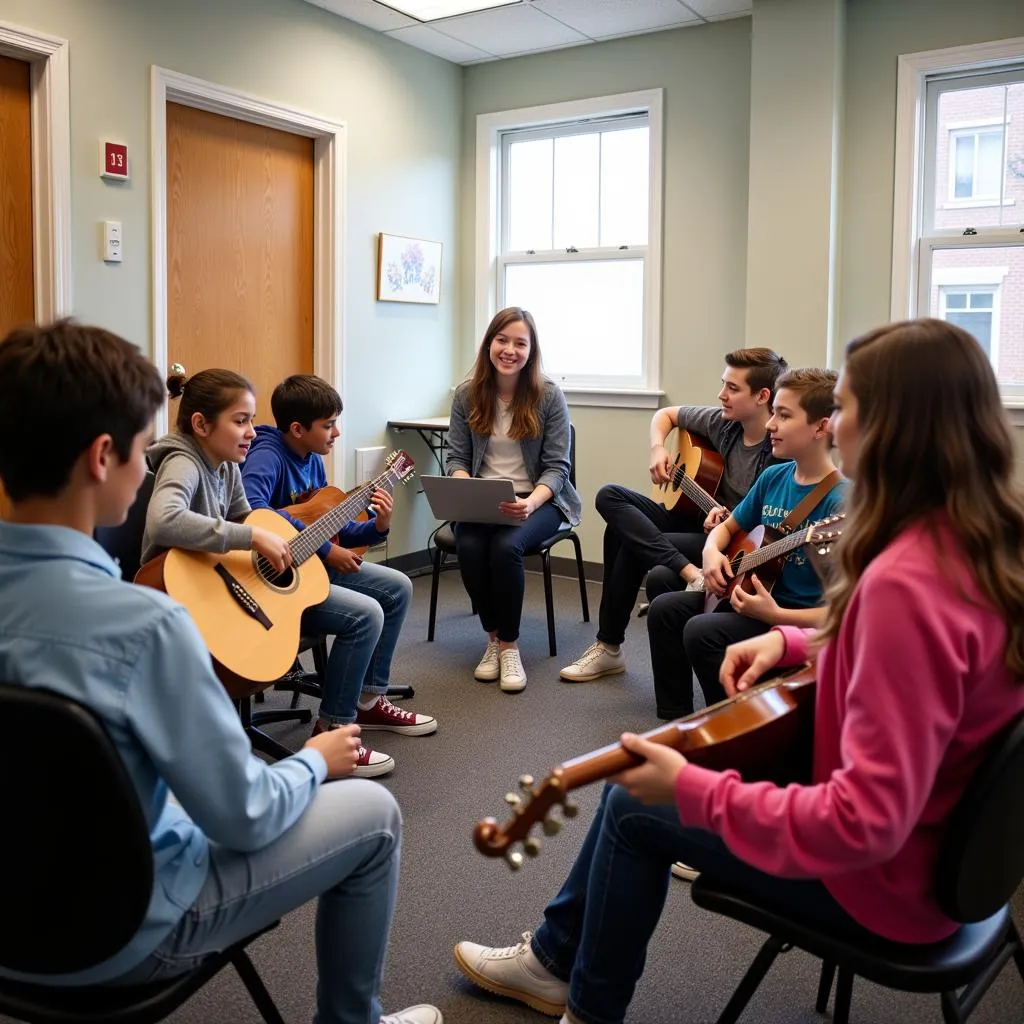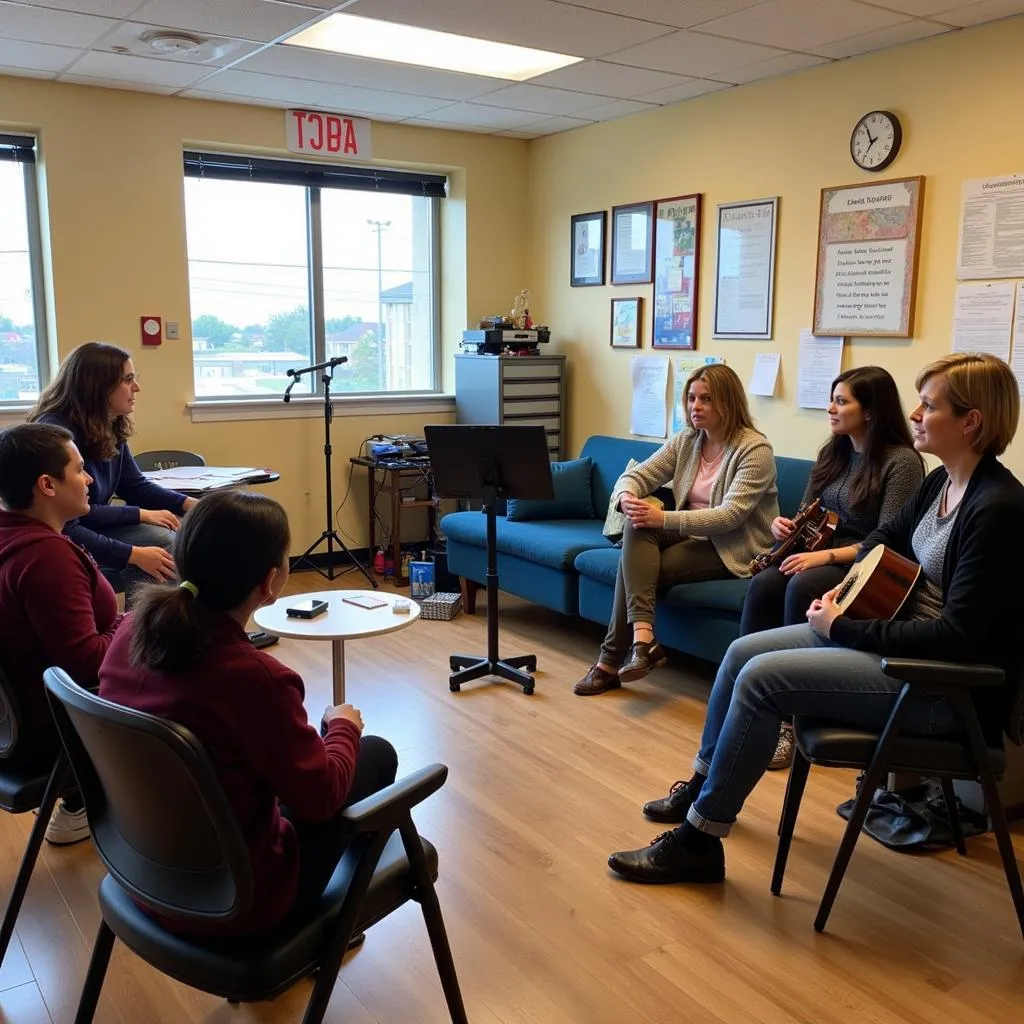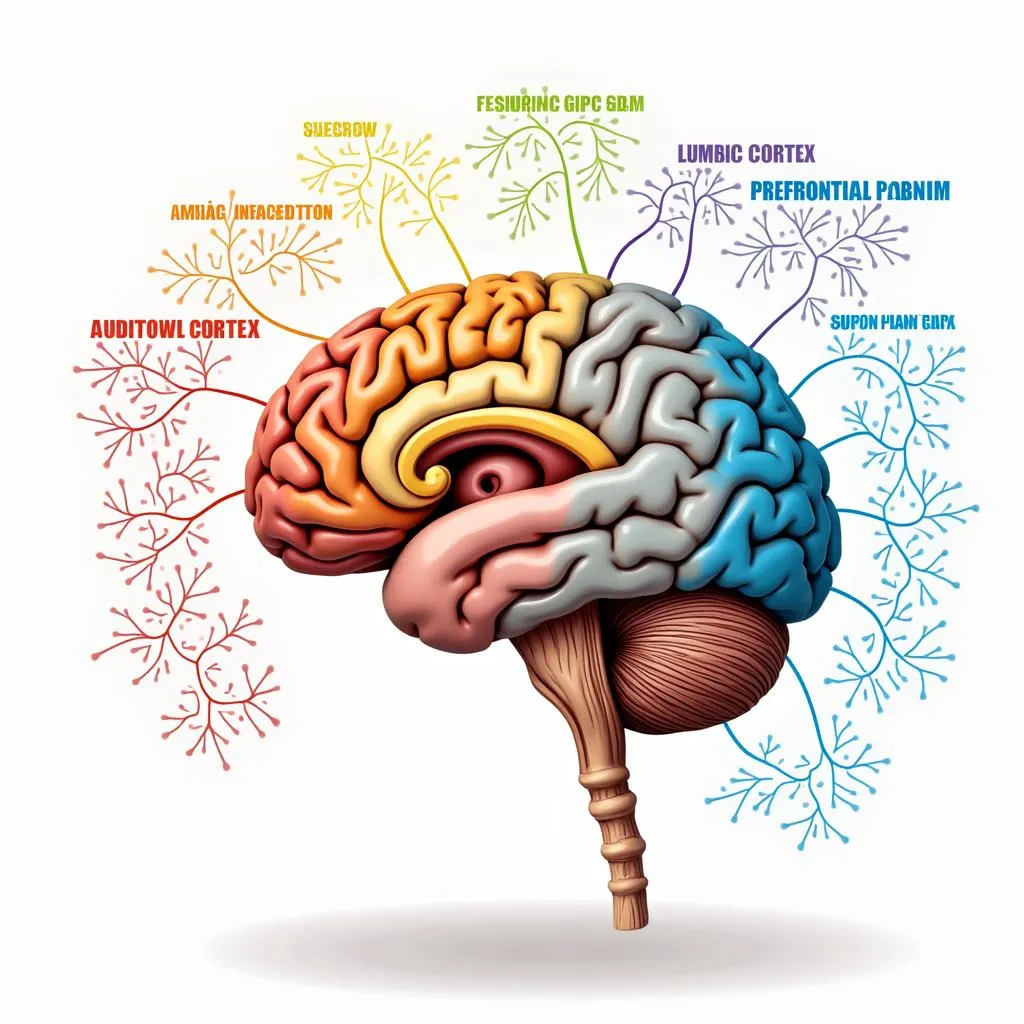The IELTS Reading test is a crucial component of the IELTS exam, and today we’ll explore a fascinating topic: the use of music therapy in student counseling programs. This article provides a comprehensive IELTS Reading practice test, complete with passages, questions, and answers to help you prepare for your exam.
How art therapy supports student mental health is another interesting approach to enhancing student well-being. Now, let’s dive into our music therapy-focused IELTS Reading practice test.
Passage 1 – Easy Text
The Healing Power of Music in Student Counseling
Music has long been recognized for its ability to evoke emotions and influence mood. In recent years, educational institutions have begun to harness this power by incorporating music therapy into their student counseling programs. This innovative approach combines the therapeutic benefits of music with traditional counseling techniques to address a wide range of student issues, from academic stress to emotional disturbances.
Music therapy in student counseling typically involves a trained music therapist working alongside school counselors to create tailored programs for individual students or small groups. These sessions may include activities such as listening to music, playing instruments, or composing songs. The goal is to help students express themselves, develop coping strategies, and improve their overall well-being.
One of the key advantages of music therapy is its accessibility. Unlike some forms of therapy that rely heavily on verbal communication, music therapy can be effective for students who struggle to express themselves through words alone. This makes it particularly valuable for students with language barriers, learning disabilities, or those who simply find it difficult to open up in traditional counseling settings.
Research has shown that music therapy can have a significant positive impact on students’ mental health and academic performance. Studies have reported improvements in areas such as stress reduction, anxiety management, and self-esteem. Additionally, some schools have observed a decrease in behavioral issues and an increase in student engagement since implementing music therapy programs.
As the field of music therapy continues to grow and evolve, more schools are recognizing its potential to support student well-being. While it may not replace traditional counseling methods entirely, music therapy offers a complementary approach that can enhance the overall effectiveness of student support services.
 Music therapy in student counseling
Music therapy in student counseling
Questions 1-5
Do the following statements agree with the information given in the passage? Write
TRUE if the statement agrees with the information
FALSE if the statement contradicts the information
NOT GIVEN if there is no information on this
- Music therapy is a new concept that has only recently been discovered.
- Music therapy sessions always involve students playing musical instruments.
- Music therapy can be beneficial for students who have difficulty expressing themselves verbally.
- All schools in the country have implemented music therapy programs.
- Music therapy has been shown to improve students’ academic performance.
Questions 6-10
Complete the sentences below. Choose NO MORE THAN THREE WORDS from the passage for each answer.
- Music therapy sessions are typically conducted by a __ working with school counselors.
- The main objective of music therapy in student counseling is to improve students’ __.
- Music therapy can be particularly helpful for students with __ or learning disabilities.
- Studies have shown that music therapy can help with __ and anxiety management.
- Music therapy is seen as a __ to traditional counseling methods in schools.
Passage 2 – Medium Text
Implementing Music Therapy in Educational Settings
The integration of music therapy into student counseling programs represents a paradigm shift in how educational institutions approach mental health support. This innovative method, which combines the healing properties of music with evidence-based therapeutic techniques, is gaining traction in schools and universities worldwide. However, the implementation of such programs requires careful consideration and planning to ensure their effectiveness and sustainability.
One of the primary challenges in establishing a music therapy program is the need for qualified professionals. Music therapists must possess not only a deep understanding of music but also specialized training in psychology and counseling. This dual expertise is crucial for designing interventions that are both musically engaging and therapeutically beneficial. Educational institutions must therefore invest in recruiting and retaining professionals who meet these specific qualifications.
Another key consideration is the allocation of resources. Implementing a music therapy program often requires dedicated space, instruments, and technology. Schools must balance these needs with existing budget constraints and competing priorities. Some institutions have found success in partnering with local music schools or community organizations to share resources and expertise, creating a more cost-effective approach to program implementation.
The integration of music therapy with existing counseling services is also a critical factor. For maximum effectiveness, music therapy should not be viewed as a standalone service but as part of a holistic approach to student support. This requires collaboration between music therapists, school counselors, teachers, and administrators to ensure that the program aligns with overall educational goals and student needs.
Measuring the impact of music therapy programs is essential for justifying their continued support and refining their effectiveness. Schools implementing these programs should establish clear metrics for success, which may include improvements in academic performance, reductions in disciplinary issues, or enhanced scores on standardized measures of mental health and well-being. Longitudinal studies tracking student progress over time can provide valuable insights into the long-term benefits of music therapy interventions.
 Implementing music therapy in schools
Implementing music therapy in schools
Despite the challenges, many schools that have successfully implemented music therapy programs report significant positive outcomes. Students participating in these programs often demonstrate improved emotional regulation, enhanced social skills, and a greater sense of self-efficacy. Moreover, the inclusive nature of music therapy allows it to benefit a wide range of students, including those with special needs or those who may be resistant to traditional counseling approaches.
As research in this field continues to grow, it is likely that music therapy will become an increasingly integral component of student support services in educational settings. By addressing the challenges of implementation and continually refining their approaches, schools can harness the power of music to create more supportive, nurturing environments for their students.
Questions 11-14
Choose the correct letter, A, B, C, or D.
-
According to the passage, music therapists need to have:
A) Only musical skills
B) Only counseling skills
C) Both musical and counseling skills
D) Either musical or counseling skills -
When implementing music therapy programs, schools often face challenges with:
A) Student participation
B) Resource allocation
C) Legal restrictions
D) Parental approval -
The passage suggests that music therapy programs should be:
A) Completely separate from other counseling services
B) Integrated with existing support services
C) Focused solely on musical education
D) Implemented only in universities -
To justify the continued support of music therapy programs, schools should:
A) Rely solely on anecdotal evidence
B) Focus only on academic performance improvements
C) Establish clear metrics for success
D) Implement programs without evaluation
Questions 15-19
Complete the summary below. Choose NO MORE THAN TWO WORDS from the passage for each answer.
Implementing music therapy in educational settings requires careful planning. Schools need to hire (15) __ who have both musical and therapeutic expertise. To manage costs, some institutions (16) __ with local organizations. It’s important to integrate music therapy into a (17) __ to student support. Schools should also establish (18) __ to measure the program’s impact. Despite challenges, many schools report (19) __ from these programs, including improved emotional regulation and social skills.
Passage 3 – Hard Text
The Neuroscience of Music Therapy in Academic Contexts
The application of music therapy in student counseling programs has garnered increasing attention not only from educators and psychologists but also from neuroscientists. This interdisciplinary interest stems from the profound impact that music has been observed to have on the brain, particularly in areas related to emotion, memory, and cognitive function. Understanding the neurological underpinnings of music therapy’s effectiveness can provide valuable insights into how to optimize its use in academic settings.
Recent neuroimaging studies have revealed that music engagement activates multiple brain regions simultaneously, creating a symphony of neural activity that spans both hemispheres. This widespread activation is particularly noteworthy in the context of therapy, as it suggests that music can serve as a powerful tool for promoting neuroplasticity – the brain’s ability to form new neural connections and reorganize existing ones. For students grappling with academic or emotional challenges, this neuroplastic potential could be instrumental in developing new coping strategies and learning patterns.
One of the key neural mechanisms underlying music therapy’s efficacy is its impact on the limbic system, the brain’s emotional center. When students engage with music, whether through listening, playing, or creating, there is a marked increase in activity in areas such as the amygdala and hippocampus. These regions play crucial roles in emotional processing and memory formation, respectively. By modulating activity in these areas, music therapy can help students regulate their emotional responses to stressors and enhance their ability to retain and recall information – both critical skills in academic environments.
Moreover, music has been shown to influence neurotransmitter production, particularly dopamine and serotonin, which are associated with pleasure, motivation, and mood regulation. The release of these neurotransmitters during music therapy sessions may contribute to the reported improvements in student well-being and engagement. This neurochemical effect could explain why many students describe feeling more motivated and positively disposed towards their studies after participating in music therapy programs.
 Brain activity during music therapy
Brain activity during music therapy
The prefrontal cortex, responsible for executive functions such as planning, decision-making, and impulse control, also shows enhanced activity during music engagement. This activation is particularly relevant for students struggling with attention deficit disorders or executive function challenges. Music therapy interventions that target these cognitive processes could potentially help students improve their organizational skills, time management, and overall academic performance.
Another intriguing aspect of music’s neural impact is its ability to synchronize brain wave patterns. Studies using electroencephalography (EEG) have demonstrated that listening to certain types of music can induce specific brain wave states associated with relaxation, focus, or creativity. This finding has led to the development of targeted music therapy interventions designed to induce optimal brain states for different academic tasks, such as studying, problem-solving, or creative writing.
The cross-modal nature of music processing in the brain also offers unique therapeutic opportunities. Music engages auditory, motor, and visual processing systems, creating rich, multimodal experiences that can be particularly beneficial for students with learning disabilities or sensory processing disorders. By leveraging these cross-modal connections, music therapists can design interventions that address multiple aspects of a student’s cognitive and sensory needs simultaneously.
As our understanding of the neuroscience behind music therapy continues to evolve, so too does the potential for developing more targeted and effective interventions. The integration of neuroimaging techniques and physiological measurements into music therapy research promises to yield even more precise insights into how different musical elements and therapeutic approaches affect brain function and, consequently, student outcomes.
However, it is crucial to note that while neuroscientific findings provide compelling evidence for the efficacy of music therapy, the subjective experience of music remains deeply personal and culturally influenced. Therefore, the application of music therapy in student counseling must always be tailored to the individual needs, preferences, and cultural background of each student to maximize its therapeutic potential.
In conclusion, the neuroscience of music therapy offers a fascinating window into the brain’s remarkable plasticity and the power of music to effect positive change. As educational institutions continue to explore innovative approaches to student support, the neurologically informed application of music therapy stands poised to play an increasingly significant role in fostering academic success and emotional well-being among diverse student populations.
Questions 20-23
Choose the correct letter, A, B, C, or D.
-
According to the passage, music engagement:
A) Only activates the left hemisphere of the brain
B) Activates multiple brain regions simultaneously
C) Has no effect on brain activity
D) Only impacts the auditory cortex -
The limbic system’s involvement in music therapy is significant because it:
A) Controls motor functions
B) Regulates body temperature
C) Processes emotions and forms memories
D) Is responsible for language production -
Music therapy’s effect on neurotransmitter production is linked to:
A) Increased physical strength
B) Improved visual acuity
C) Enhanced mood and motivation
D) Decreased cognitive function -
The synchronization of brain wave patterns through music is being used to:
A) Treat physical injuries
B) Induce specific mental states for different tasks
C) Increase student height
D) Improve athletic performance
Questions 24-26
Complete the sentences below. Choose NO MORE THAN THREE WORDS from the passage for each answer.
- Music therapy interventions targeting the prefrontal cortex may help students improve their __ and academic performance.
- The __ of music processing in the brain creates opportunities for addressing multiple cognitive and sensory needs.
- While neuroscience provides evidence for music therapy’s efficacy, the application must be tailored to each student’s __ to maximize its potential.
Questions 27-30
Do the following statements agree with the claims of the writer in the passage? Write
YES if the statement agrees with the claims of the writer
NO if the statement contradicts the claims of the writer
NOT GIVEN if it is impossible to say what the writer thinks about this
- Music therapy is equally effective for all students regardless of their cultural background.
- Neuroimaging techniques are currently being used to refine music therapy interventions.
- The effects of music therapy on the brain are limited to short-term changes.
- Future research in music therapy will likely incorporate more physiological measurements.
Answer Key
- FALSE
- FALSE
- TRUE
- NOT GIVEN
- TRUE
- trained music therapist
- overall well-being
- language barriers
- stress reduction
- complementary approach
- C
- B
- B
- C
- qualified professionals
- partner
- holistic approach
- clear metrics
- positive outcomes
- B
- C
- C
- B
- organizational skills
- cross-modal nature
- individual needs
- NO
- YES
- NO
- YES
This comprehensive IELTS Reading practice test on the use of music therapy in student counseling programs provides valuable preparation for your exam. Remember to analyze the passages carefully and use the strategies you’ve learned to tackle different question types effectively. Good luck with your IELTS preparation!


